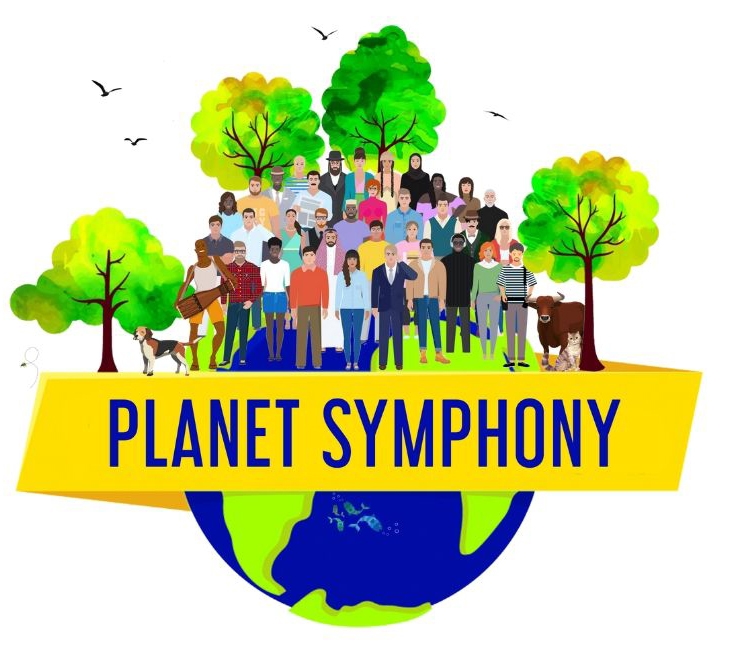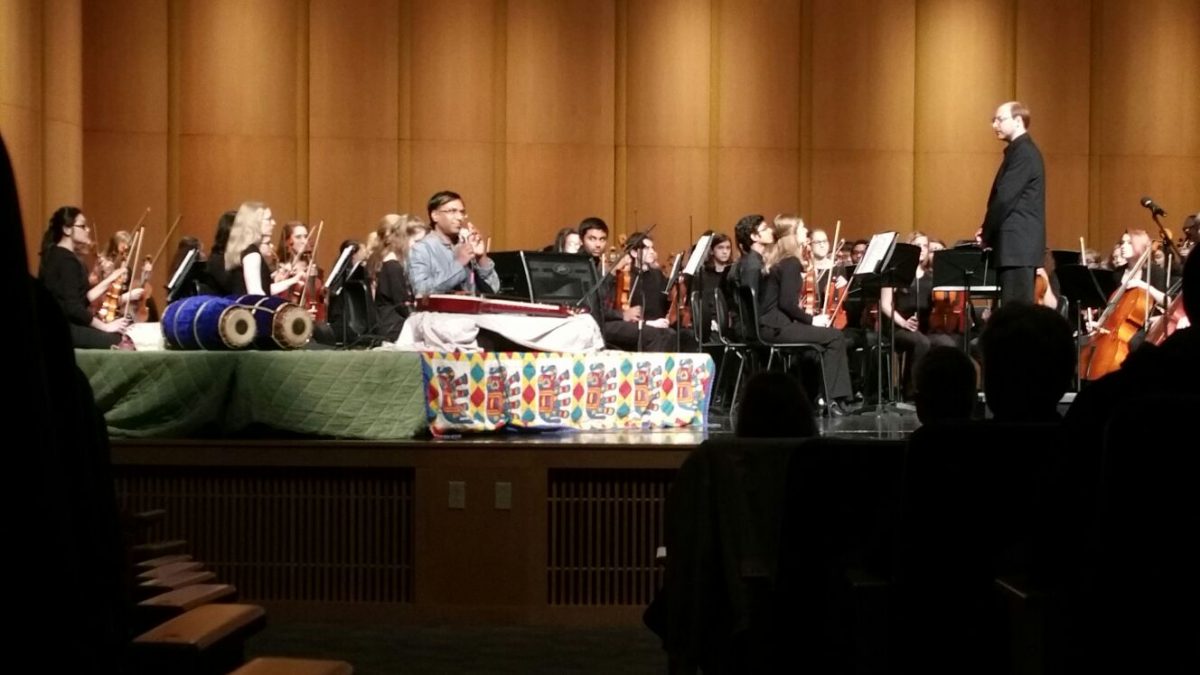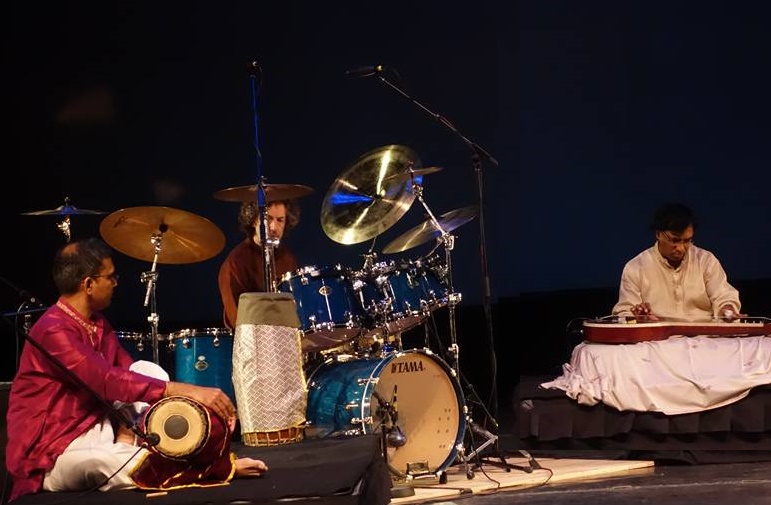Composing with Melharmony
This article explains the basic approach for you to create your own compositions using the principles of Melharmony.
Melharmony is not merely a new age musical experiment; it is an aesthetic experience anchored on important principles that has delighted thousands across the world as the video above shows One of the main reasons for this is that melharmony endeavours to create a middle ground between the horizontal melodic approach and the vertical harmonic approach, which in turn can potentially extend the horizons of classical as well as popular cultures.
- In order to be a Melharmony composer yourself, you need to be thoroughly conversant with rules of harmony as well as melodic factors of systems such as Indian Classical, highlighted in the About Melharmony sections.
- It would also help to go over some of Chitravina N Ravikiran’s original compositions in various and arrangements of works of master Indian classical composers such as Tyagaraja (1767-1847), Oottukkadu Venkata Kavi (1700-65) and Muttuswami Dikshitar (1775-1835), Shyama Shastri (1762-1827), Swati Tirunal (1814-47) for both classical and contemporary genres of music. Many of these pieces are flavoured with exciting rhythmic patterns in attractive ragas (modes/scales novel in the West) like Hamsadhwani, Nattai, Hemavati, Janaranjani and Behag. Watch this video of Climatrix Symphony, that traverses each one of the 72 Principal Scales of Indian Carnatic Music in just 8 minutes.
- Read the other sections below to appreciate the similarities between melodic and harmonic systems which can empower you to create music that sounds true to both genres.
While any two systems of music are going to be distinctive from one another, one of the most important facets of Melharmonic philosophy is that often, even seemingly disparate systems have more similarities than what may be imagined. If composers, musicians and listeners can explore and enjoy the beauty of the similarities as a starting point, the distinctions between systems not only be often surmountable but will seem exciting and colourful.
Obvious similarities between most systems are:
- 7-note, 12-tone system within an octave
- Certain fundamental rhythms
Examples of non obvious similarities between say Western and (South Indian) Carnatic are:
- Strong theory and attractive performance traditions
- Classical composers who created sophisticated musical forms of diverse types (many of who happened to be contemporaries such as Oottukkadu Venkata Kavi (1700-65) & J S Bach, Tyagaraja (1767-1847) & Mozart, Muttuswami Dikshitar (1775-1835) & Beethoven
- Importance given to projecting compositions in concerts
- Theoretical concepts such as comma intervals, tempo, speed
- Similarities in notating speed changes (beams/underlines to connect groups of notes beyond a particular speed)
Certain vital differences between the above systems include:
- Carnatic is melodic, Western is harmony-centric
- Carnatic uses just-intonation whereas Western has shifted to equal-tempered tuning (resulting in minute changes in pitch values of various notes)
- Carnatic repertoire is essentially vocal-centric which are also interpreted by various instrumentalists
- Most Carnatic concerts are solo-centric with accompaniments
- Carnatic concerts typically have a 50-50 mix of compositions and improvisation
- Carnatic notation generally leaves tempo, dynamics, expressions, articulations to individual performers (as opposed to Western where these are marked)
It is essential even for quality composers of harmony to be aware of the intricate melodic approach in evolved systems like Indian Classical. Melharmony dictates that “a composition based on a well-defined raga not only features chords and harmonies drawn only from notes permitted in the raga, but also highlights the sequence, structure and typical ornamentation that bestow the raga its unique individuality and identity.” In this manner it is distinct from simple diatonic harmony that takes care of only the scale but not the other aspects associated with a raga.
Important aspects contributing to the distinctive feel to each raga
- Scale: Notes used in the raga that enable a Carnatic raga to be classified under one or more of a possible 72 parent ragas (mela-kartas) which are 7-tone scales akin to the Major and Minor in Western music.
- Sequence: Specific to both ascending and descending scale patterns. This is a very fundamental aspect of a raga that composers must be well aware of, since even a minute change in the sequence can mean a different raga. The audio example will demonstrate a short melharmonic segment based on raga Janaranjani, which uses the notes of the Major Scale (Shankarabharanam) but in a sequence of: C D E F G A G B C – C A G F D C.
- Hierarchy of the notes: Many ragas have certain notes that are dominant, notes with development potential as also ‘touch me gently’ notes which can only be rendered fleetingly as well as notes in which phrases cannot begin and/or end.
- Typical ornamentation: Again, each raga has well defined rules of what notes can be rendered plain or with movement or micro-tonal variation depending on the context. In the South Indian Carnatic system, oscillation of a note is a major ornamentation that is in fact the lifeline of some ragas. Composers seeking to use Carnatic ragas will find it most rewarding to acquaint themselves with some of these principles.
- Key phrases: Since Melharmony aims to bring out the beauty of the raga, one must be aware of the ways in which a raga can be made to come alive in the course of a composition. The classical approach to ragas in India have been focussed on revealing the raga from the very first phrase. Even an awareness of 10-12 key phrases of a raga will go a long way in enabling a composer to feel the pulse of the raga and create quality compositions in those.
However, Melharmony does not merely act as a subset of possible chords or harmonies within a raga. It also explores new harmonic possibilities for composers with its melody-centric demands. Thus, it does not impose limitations on a composer but opens up exciting new possibilities.
It is essential for even composers skilled in melody to develop at least a working knowledge about systems anchored on Harmony to be able to create melharmonic compositions of reasonable quality.
- First up, it is important to know the equivalent terms for musical notes, ornamentation and other technical aspects of the system one aims to fuse with.
- Important techniques employed in the West to create multiple parts include triadic harmony, ostinato, imitation etc.
- It is essential to know about the range, typical speeds and tonalities of various orchestral instruments (bassoon, oboe, tuba, trombone etc) not to mention the brilliant manner in which they have been explored by legendary composers such as Bach, Mozart, Beethoven and others.
- Listening to a lot of quality orchestras, ensembles or even soloists can help a lot.
- An ability to write/read Western staff notation with its sophisticated but precise markings for expressions, articulation, dynamics etc is vital.
- Quality conversations with top musicians, conductors and composers can enable one to appreciate what aspects contribute to the most aesthetic experience and what mars from it, from a Western standpoint. For example, the combination of the 1st and 4th degrees (Sa and Ma1) typically sounds good to listeners of Indian music but it is not considered optimal in some systems.



